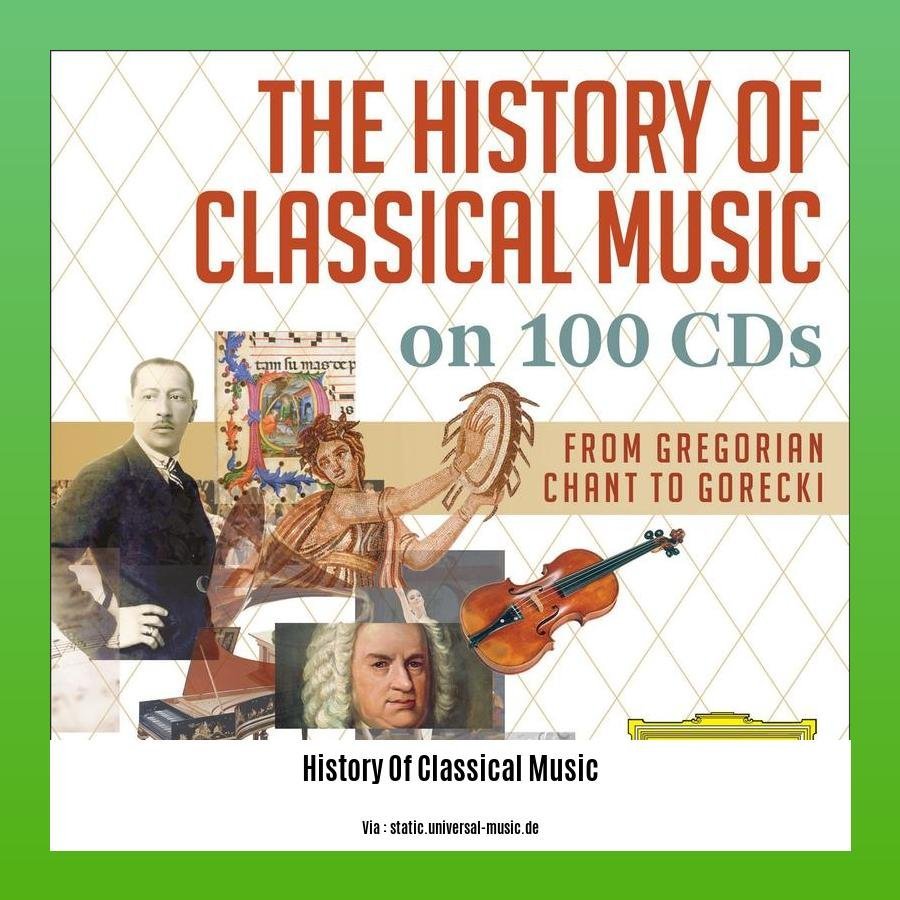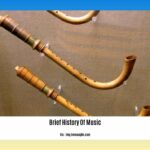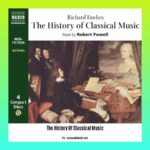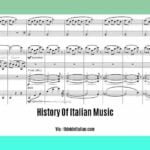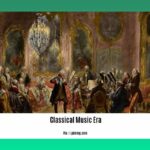Embark on a captivating journey through the evolution of melodies in classical music, from the ancient Greek origins to the vibrant contemporary era. Discover how melodies have transformed over centuries, reflecting cultural shifts, technological advancements, and the brilliance of renowned composers. Explore the intricate interplay between melody, harmony, and rhythm, and witness how melodies have shaped the course of classical music history. Prepare to be mesmerized as we delve into [The Evolution of Melodies: A Journey Through the History of Classical Music].
Key Takeaways:
Classical music, distinct from Western folk or popular music, emphasizes formality, complexity, and often features polyphony.
Rooted in Western Europe, early classical music was religious, monophonic, and vocal.
Ancient Greek and Roman thought and theory influenced early classical music.
The Gregorian chant emerged as plainchant unified during the Carolingian Empire (800-888).
History of Classical Music
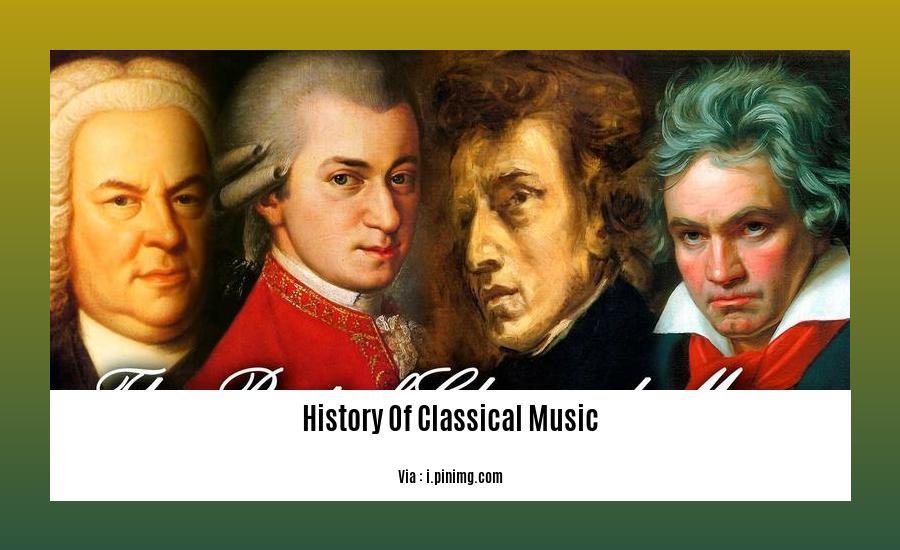
Over millennia, classical music, an art form characterized by complexity, formality, and polyphony, has undergone a fascinating evolution that has shaped our understanding of musical expression. Its roots can be traced back to ancient Greece and Rome, where philosophers and scholars explored the theoretical foundations of music.
From Monophony to Polyphony: A Journey of Harmony
The earliest forms of classical music were religious and monophonic, or single-voiced, chants. The Gregorian chant, emerging during the Carolingian Empire, exemplified this tradition. However, as music theory evolved and instrumental accompaniment became more sophisticated, polyphony, or the simultaneous combination of multiple melodic lines, began to emerge. This shift towards polyphony gave rise to new forms of musical expression, including the motet and the madrigal.
The Baroque Era: A Flourish of Virtuosity
The Baroque era, spanning the 17th and early 18th centuries, witnessed an explosion of creativity and virtuosity in classical music. Composers such as Bach, Handel, and Vivaldi pushed the boundaries of musical expression through their innovative use of counterpoint, harmony, and ornamentation. The rise of opera during this period further showcased the dramatic potential of classical music, with works like Monteverdi’s “Orfeo” and Handel’s “Messiah” becoming cornerstones of the genre.
The Classical Era: Refinement and Elegance
The Classical era, succeeding the Baroque period, brought a shift towards clarity, balance, and elegance in classical music. Composers like Haydn, Mozart, and Beethoven epitomized this new aesthetic with their emphasis on form and structure. The symphony, concerto, and sonata became the dominant genres of the era, and the orchestra grew in size and complexity, allowing for a broader range of musical expression.
The Romantic Era: Emotion and Individualism
The Romantic era, emerging in the early 19th century, marked a departure from the restraint of the Classical era. Romantic composers like Schubert, Chopin, and Schumann embraced emotional expression, individualism, and programmatic music, which sought to evoke specific images or stories through music. The rise of the piano as a solo instrument during this period further fueled the Romantic movement, allowing for greater virtuosity and expressiveness.
The Modern Era: Breaking Conventions and Embracing Diversity
The modern era of classical music, spanning the late 19th and 20th centuries, witnessed a radical departure from traditional forms and structures. Composers like Stravinsky, Schoenberg, and Webern challenged conventional tonality, rhythm, and harmony, paving the way for new styles such as atonality, serialism, and minimalism. This era also saw the rise of nationalism in music, as composers drew inspiration from their cultural heritage to create unique musical expressions.
Uncover the captivating history of civil engineering and witness how it has shaped the world we live in. history of civil engineering
Discover the intriguing history behind the iconic claddagh rings, a symbol of love and friendship. history of claddagh rings
Embark on a journey through time to explore the history of clock towers, majestic structures that have stood the test of time. history of clock towers
Renaissance Music: The flowering of polyphony and the development of new genres, such as the madrigal and the motet.
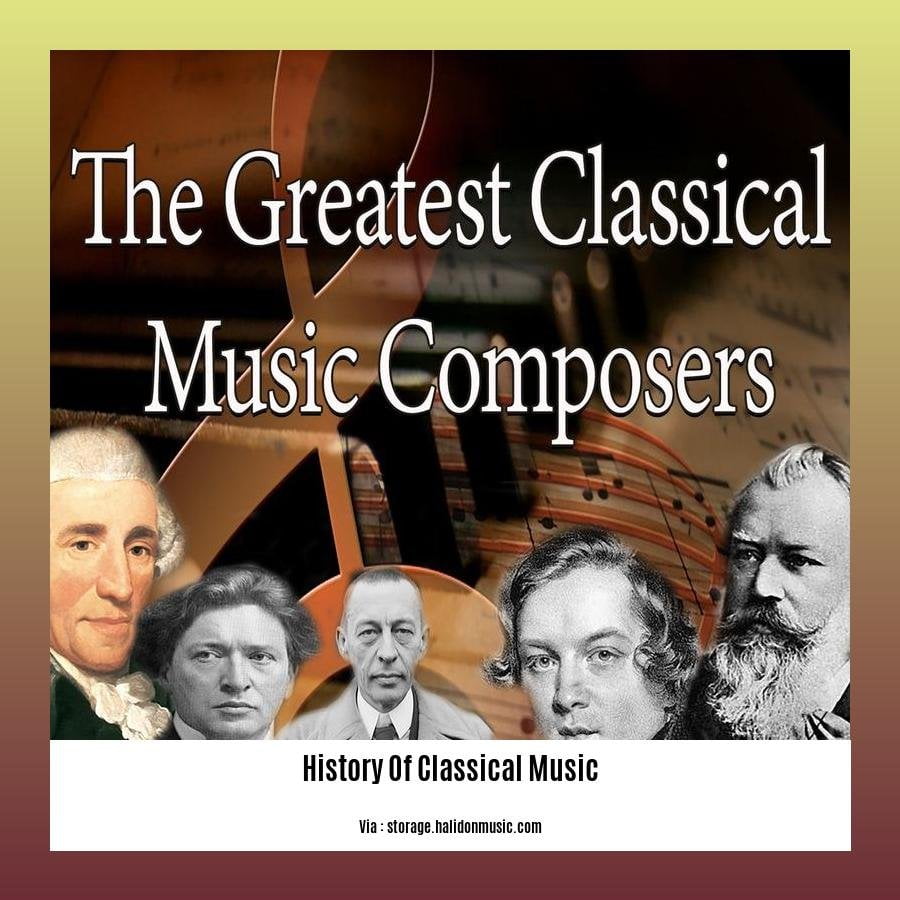
In the 15th and 16th centuries, Renaissance Music thrived, bringing forth a stunning transformation in the world of classical music. During this vibrant era, the art of polyphony, where multiple melodies intermingle, blossomed, marking a significant departure from the monophonic chant prevalent in the Middle Ages. Accompanied by an array of instruments, this era witnessed the birth of new musical genres, including the enchanting madrigal and the sacred motet.
The Marvel of Polyphony: A Tapestry of Melodies
Polyphony can be likened to a vibrant tapestry, where distinct melodies intertwine, creating a harmonious blend. Unlike monophony, where a single voice reigns supreme, polyphony allows for the simultaneous weaving of multiple melodies, each pursuing its path yet contributing to the overall tapestry.
The Renaissance composers, with their mastery of counterpoint, crafted intricate polyphonic compositions. They explored various techniques, such as canon and fugue, to create complex and engaging musical structures, each voice adding its unique color to the ensemble.
The Madrigal: Love, longing, and Life’s Revelry
The madrigal, a secular genre emerging during the Renaissance, captured the essence of love, longing, and the myriad facets of human experience. These polyphonic compositions were primarily intended for unaccompanied voices, often accompanied by lute or another instrument.
Madrigals brought forth a world of emotions, from the bliss of requited love to the agony of heartbreak. Their lyrics, often poetic and allegorical, captured the essence of the Renaissance spirit, celebrating life and its many joys.
The Motet: A Sacred Polyphony
The motet, a sacred counterpart to the madrigal, flourished in the Renaissance, resonating within the walls of cathedrals and churches. These polyphonic compositions were primarily based on liturgical texts, such as psalms or biblical passages.
Motets, unlike madrigals, often incorporated a cantus firmus, a pre-existing melody upon which the other voices wove their intricate tapestry. The sacred nature of the motet imbued these compositions with a sense of solemnity and awe.
Key Takeaways:
- The Renaissance era (15th and 16th centuries) marked a significant shift in classical music, with the flourishing of polyphony and the emergence of new genres like the madrigal and the motet.
- Polyphony, a defining feature of Renaissance music, involved multiple independent melodies woven together, creating a rich and intricate texture.
- The madrigal, a secular genre, captured the essence of love, longing, and human emotions through poetic lyrics and unaccompanied vocal performances, often accompanied by instruments like the lute.
- The motet, a sacred polyphonic genre, resonated within religious settings, based on liturgical texts and featuring a cantus firmus, a pre-existing melody.
Sources:
- Renaissance Era Music Guide: A History of Renaissance Music
- Music in the Renaissance | Essay | The Metropolitan Museum of Art
Baroque Music: The Rise of the Opera and the Development of Instrumental Music, such as the Concerto and the Sonata.
Key Takeaways:
1. Emergence of Baroque Music:
– The Baroque era, extending from 1600 to 1750, witnessed the rise of Baroque music, characterized by intricate ornamentation, dynamic contrasts, and the employment of counterpoint.
2. Opera’s Emergence:
– The opera emerged as a significant art form during the Baroque period, combining drama, music, and spectacle to create captivating performances.
– Opera brought together vocal and instrumental elements, pushing the boundaries of musical expression.
3. Instrumental Virtuosity:
– Baroque music showcased instrumental virtuosity with its development of the concerto and the sonata, which highlighted the technical prowess of soloists.
– String, woodwind, keyboard, brass, and percussion instruments were utilized to construct rich and varied soundscapes.
4. String Instruments:
– The violin family, including the violino piccolo, violin, viol, viola da gamba, formed the core of Baroque music’s string section.
– String instruments provided the foundation for Baroque melodies and harmonies.
5. Woodwind Family:
– The woodwind section comprised the baroque flute, chalumeau, cortol, and bassoon, adding tonal color and depth to Baroque ensembles.
– Woodwinds often played intricate countermelodies and embellishments.
6. Keyboard Instruments:
– Keyboards like the clavichord, tangent piano, fortepiano, and harpsichord served as essential continuo instruments, providing harmonic support.
– Keyboard instruments also showcased soloistic capabilities, leading to the development of keyboard concertos.
7. Brass and Percussion Instruments:
– Brass instruments such as the cornett, natural horn, baroque trumpet, and tromba da tirarsi (also known as tromba spezzata) added brilliance and grandeur to Baroque music.
– Percussion instruments including baroque timpani, wood snare drum, tenor drum, and tambourine provided rhythmic drive and energy.
Sources:
- Overview of Baroque Instrumental Music
- Renaissance Era Music Guide: A History of Renaissance Music
Classical Music: The simplification of texture and the rise of the symphony and the sonata-allegro form.
A pivotal moment in the evolution of classical music was marked by a simplification of texture and the introduction of new forms like the symphony and the sonata-allegro. Let’s explore this transformative period.
Embracing Simplicity:
During the 18th century, composers began to favor a clearer and more concise musical texture, moving away from the intricate polyphony of earlier periods. This shift towards simplicity allowed for a greater emphasis on melody and harmony.
The Rise of the Symphony:
The symphony, initially a multi-movement work for a small ensemble, evolved into a grandiose orchestral form capable of expressing a wide range of emotions and ideas. Composers like Haydn, Mozart, and Beethoven played a pivotal role in developing the symphony’s structure and expressive potential.
The Sonata-Allegro Form:
The sonata-allegro form became the standard for the first movement of symphonies, sonatas, and concertos. This three-part structure, consisting of an exposition, development, and recapitulation, provided a framework for composers to explore musical themes and create dynamic contrasts.
Key Takeaways:
A shift towards simplicity in musical texture during the 18th century allowed for a greater focus on melodies and harmonies.
The symphony emerged as a prominent form, evolving from a small ensemble piece to a grand orchestral work expressing diverse emotions and ideas.
The sonata-allegro form, typically found in the first movement of symphonies and concertos, provided a structured framework for exploring musical themes and creating dynamic contrasts.
Composers like Haydn, Mozart, and Beethoven were instrumental in developing and refining these new forms, shaping the course of classical music.
Citations:
- Britannica: Sonata-Allegro Form
- Music Theory Academy: Sonata Form
FAQ
Q1: When did the Renaissance era of music take place?
A1: The Renaissance era in classical music occurred approximately between 1400 and 1600 CE.
Q2: What is the Gregorian chant, and when did it emerge?
A2: The Gregorian chant, also known as plainchant, emerged during the Carolingian Empire between 800 and 888 CE. It was a unified form of religious vocal music in the early days of classical music.
Q3: What instruments were commonly used in Baroque instrumental music?
A3: Baroque instrumental music featured a variety of instruments, including strings like the violin, viol, and viola da gamba; woodwinds such as the baroque flute and bassoon; keyboards like the harpsichord; brass instruments including the baroque trumpet and cornett; and percussion instruments such as the baroque timpani and snare drum.
Q4: What is the structure of sonata form in classical music?
A4: Sonata form typically consists of three parts: the exposition, which presents the main themes and establishes contrast; the development, where these themes are further explored and modulated; and the recapitulation, where the themes return, often in the tonic key, to conclude the piece.
Q5: What is polyphony, and how did it influence Renaissance music?
A5: Polyphony refers to music composed of multiple independent melodic lines that create complex harmonic and rhythmic textures. During the Renaissance era, polyphony flourished, leading to the development of new forms such as masses and motets, as well as the expansion of musical ideas regarding harmony, rhythm, and notation.
